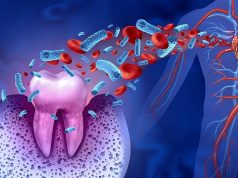Absolute number of subarachnoid hemorrhage cases increased, but age-standardized burden rates decreased between 1990 and 2021
By Elana Gotkine HealthDay Reporter
TUESDAY, June 3, 2025 (HealthDay News) — Nontraumatic subarachnoid hemorrhage (SAH) remains one of the most common cardiovascular and neurological causes of death and disabilities in the world, according to a study published online May 23 in JAMA Neurology to coincide with the annual European Stroke Organisation Conference, held from May 21 to 23 in Helsinki.
Ilari Rautalin, Ph.D., from Helsinki University Hospital, and colleagues estimated the worldwide burden of SAH from 1990 to 2021 in a cross-sectional study using data from the Global Burden of Disease 2021 study.
The researchers found that per 100,000 people, the global age-standardized SAH incidence was 8.3, prevalence was 92.2, mortality was 4.2, and the disability-adjusted life-years (DALY) rate was 125.2 in 2021. Latin America, the Caribbean, Oceania, and high-income Asia Pacific had the highest burden estimates. All age-standardized burden rates decreased between 1990 and 2021, although the absolute number of SAH cases increased. Incidence decreased by 28.8 percent, prevalence by 16.1 percent, mortality by 56.1 percent, and DALY rate by 54.6 percent. SAH was ranked as the 36th most common cause of death among 300 diseases and the 59th most common cause of DALY in the world. Overall, 71.6 percent of all worldwide SAH-related DALYs were associated with the 14 modeled risk factors, of which high systolic blood pressure and smoking had the highest attribution (population attributable fractions, 51.6 and 14.4 percent, respectively).
“Despite decreasing age-standardized burden rates, SAH remains one of the most common cardiovascular and neurological causes of death and disability globally with constantly increasing absolute case numbers,” the authors write.
Several authors disclosed ties to relevant organizations and industries.
Copyright © 2025 HealthDay. All rights reserved.








